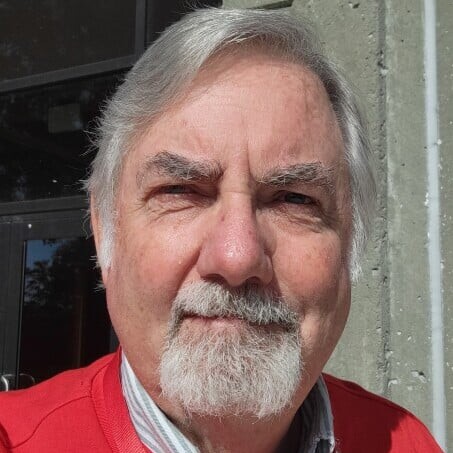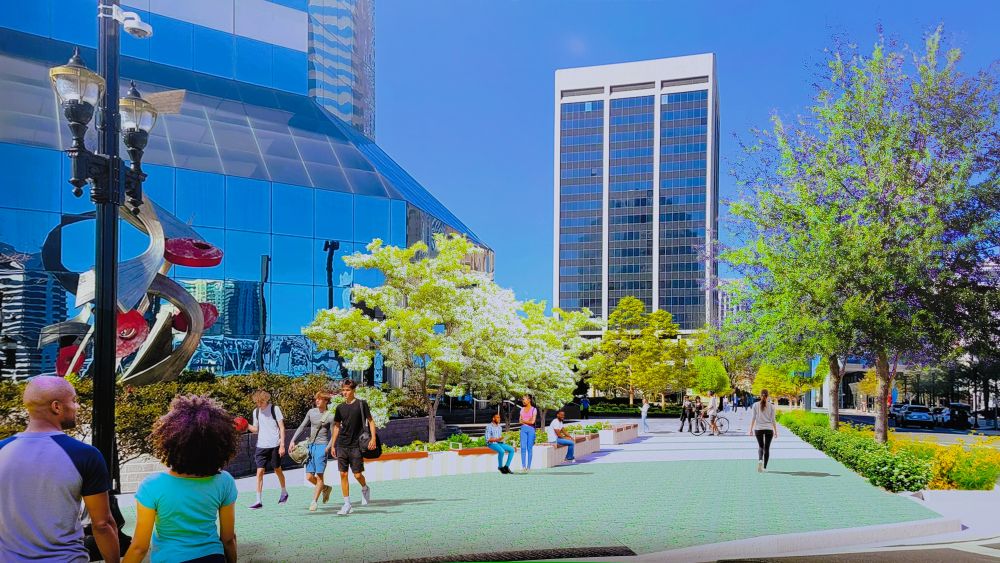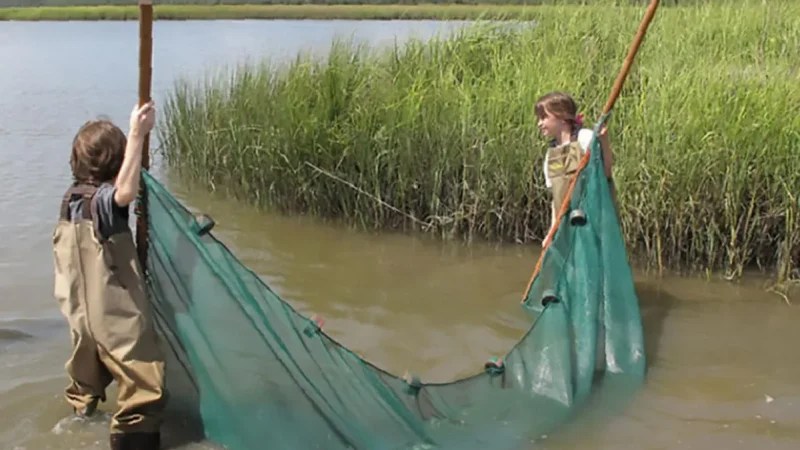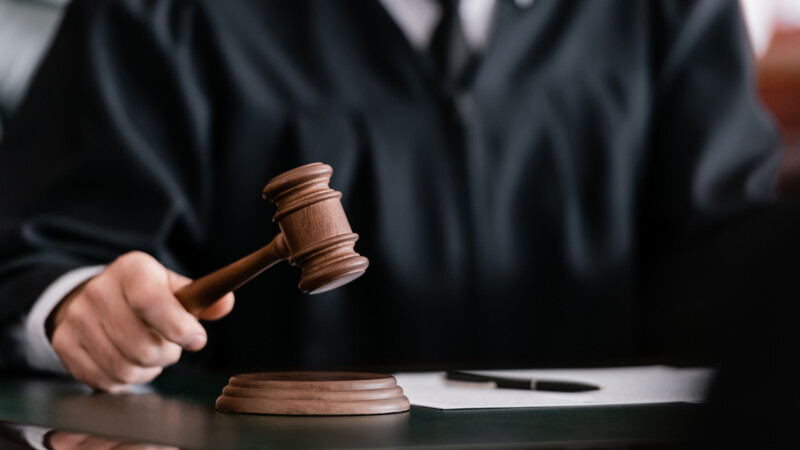The next phase of the Emerald Trail, which will be a 30-mile route of trails and parks that will connect Jacksonville’s oldest communities, officially broke ground Thursday at the Hogan Street Link.
The next phase will bisect Downtown along Hogan Street, from the St. Johns River and the Riverfront Plaza now under construction to Union Street.
Despite the recent loss of federal funds for some of the Emerald Trail’s future segments, city money was already in place to build the Hogan Street leg, Groundwork Jacksonville CEO Kay Ehas says. It’s a critical piece that runs past City Hall, James Weldon Johnson Park and more, she says.
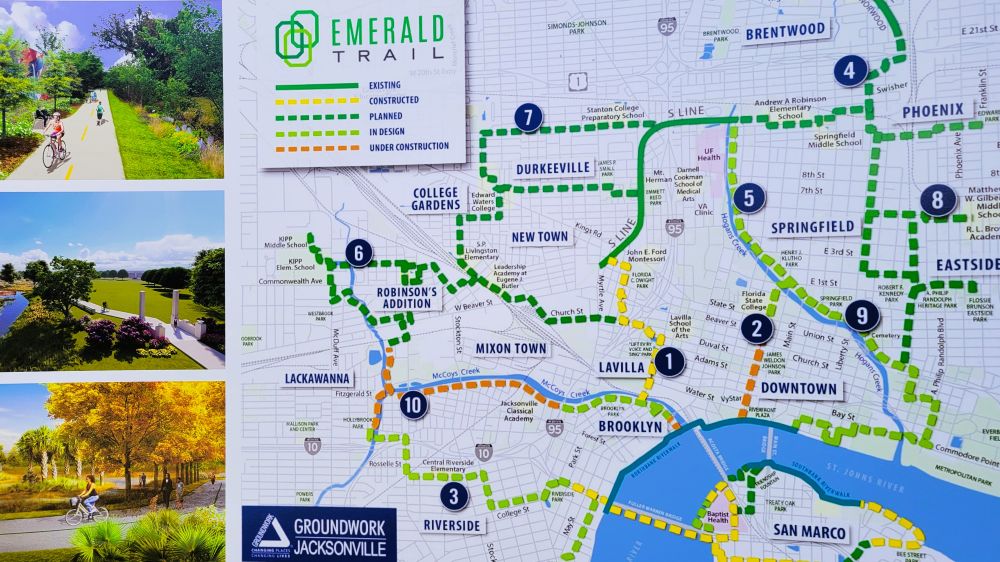
“It continues momentum to get the entire 30 miles done, and it is also going through the heart of Downtown, so it is a very important segment connecting the river all the way through Downtown, Springfield and Hogan’s Creek,” Ehas says. “Then it goes from Union (street) to Hogan’s Creek, and that is not yet funded.”
With so much of Downtown’s businesses towering above the 0.9-mile Hogan Street Link, including VyStar Credit Union, its CEO says the Emerald Trail will bring new energy to Downtown Jacksonville. VyStar was a leading donor to help complete this part of the trail.
The Hogan Street Link will add a bicycle track and a walking trail to the western side of one-way Hogan Street, separate from traffic, Ehas says. The design arose from discussions with property owners who were restoring the historic building along it, some providing easements to fit the trail, she says.
“Many have been vacant for a long time,” Ehas said. “Their input and priorities informed this project; their enthusiasm and belief in the importance of the Emerald Trail; their advocacy and their donations made them such a pleasure to work with.”
A Water Street-to-Bay Street segment is set to open in 2026. The rest of the link to Union Street is set for 2027.
Emerald Trail creation envisioned 100 years ago
The Emerald Trail’s creation was first envisioned a century ago. Local architect Henry Klutho imagined what he called the Emerald Necklace, a ring of parks, trails, greenspace and creeks across Downtown.
The Jacksonville City Council adopted the nonprofit Groundwork Jacksonville’s master plan in early 2019 for a trail system connecting more than a dozen historic urban neighborhoods to Downtown, the St. Johns River, McCoys Creek and Hogans Creek, with 16 schools, two colleges and 21 parks along the way.
The Emerald Trail is a joint venture between Groundwork Jacksonville, the Jacksonville Transportation Authority and the city. A few years ago, the City Council earmarked $132 million from the local option gas tax to build it, with corporate donors like Baptist Health, VyStar Credit Union, the Pajcic family and Brightway Insurance pledging hundreds of thousands more.
Just over four years ago, ground was broken on the the first part of the trail, the 1.3-mile-long LaVilla Link. That green-painted path opened in May of 2024 with wide sidewalks that start at the Park Street bridge over McCoys Creek and the Prime Osborn Convention Center to link the Brooklyn community to LaVilla and the existing S-line Rail Trail at State Street.
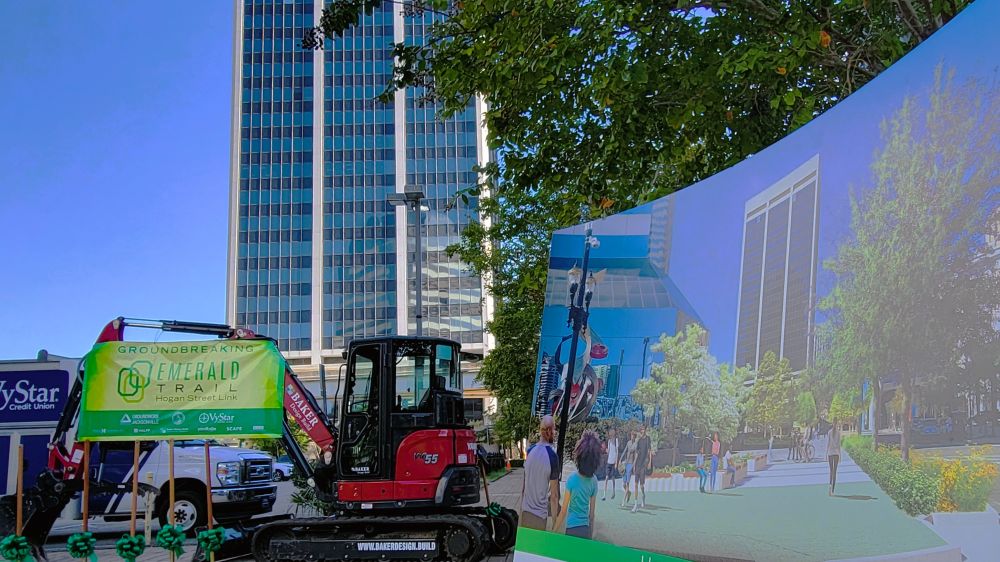
A $147 million Neighborhood Access & Equity Program Grant from the U.S. Department of Transportation would have helped fund design and construction costs of the five remaining trail segments. But the city lost that federal grant funding after Congress stripped it under President Donald Trump’s “One Big Beautiful Bill.”
Now Ehas says they are moving forward with the design of the next two segments, a 2.3-mile link connecting Riverside to McCoys Creek and North Riverside and the S-Line Rail Trail multiuse path through Durkeeville and Springfield.
“They will be funded by the gas tax. Then we start looking for additional money to fill the gap,” she says. “Think about Hogans Creek, which Groundwork is designing currently. That will be finished in September of next year, and that includes almost 3 miles of trail, and that stays with the city, so Groundwork and the city will figure out the funding for that.”
City and Groundwork officials have said they could reapply for some of the lost federal funding under an economic development grant. Groundwork officials also hope the city would consider adding more funding in future capital budgets to help fill the gap, while some of the remaining segments are part of the Florida Sun Trail, which could qualify for state funding.
